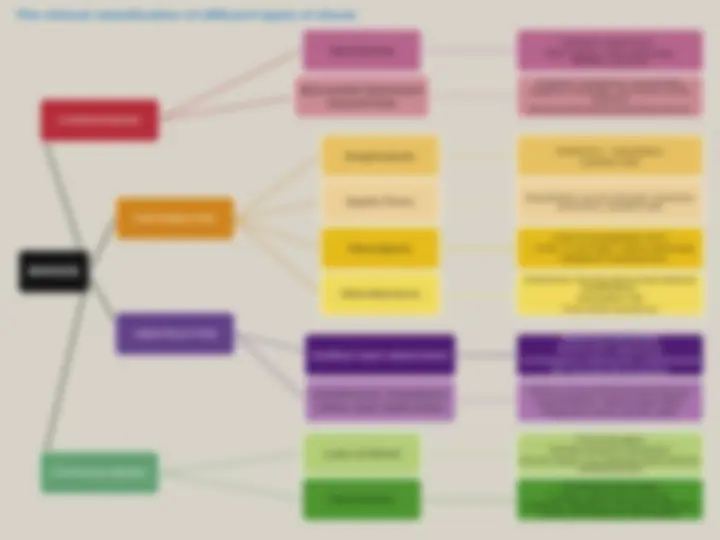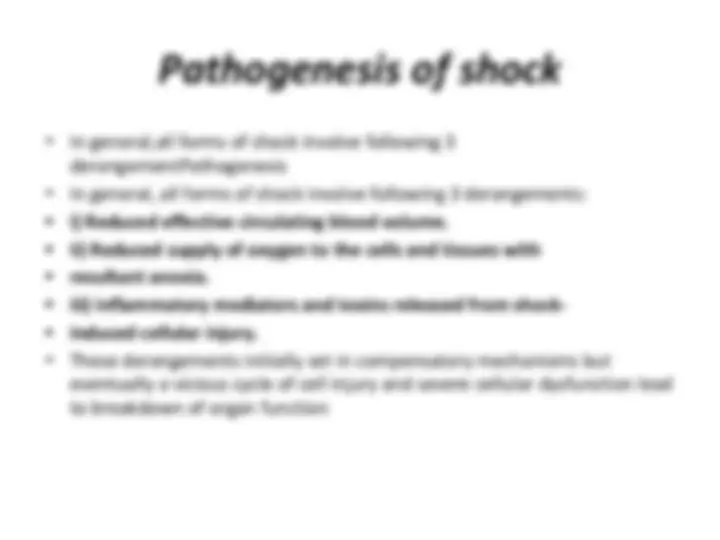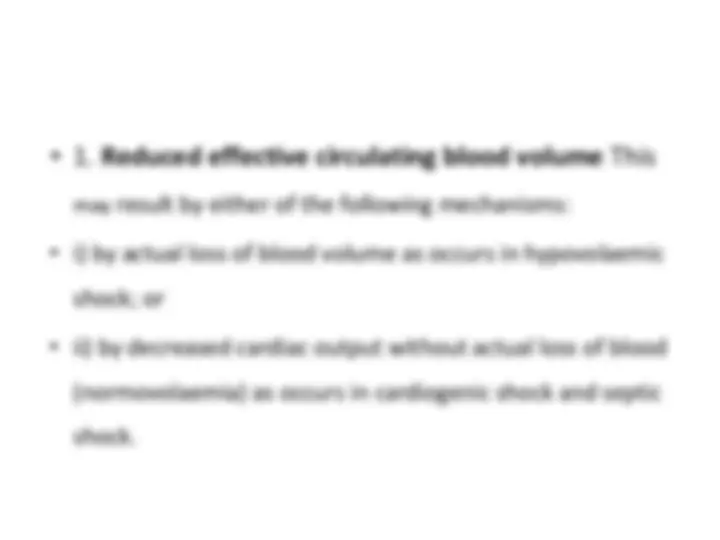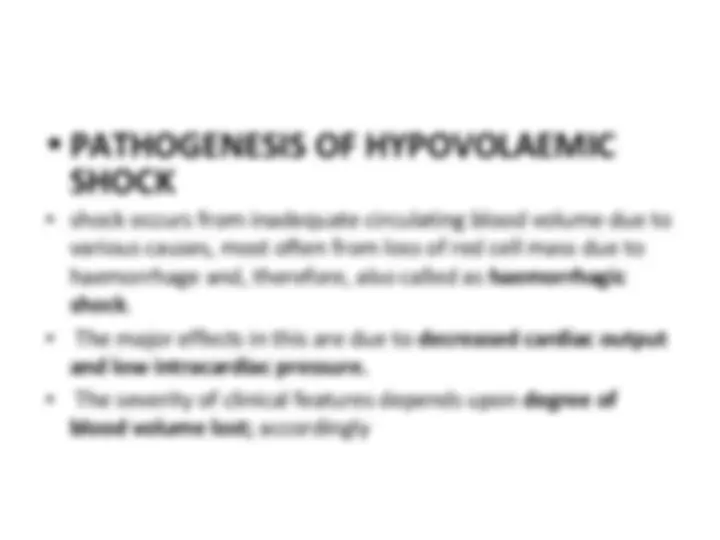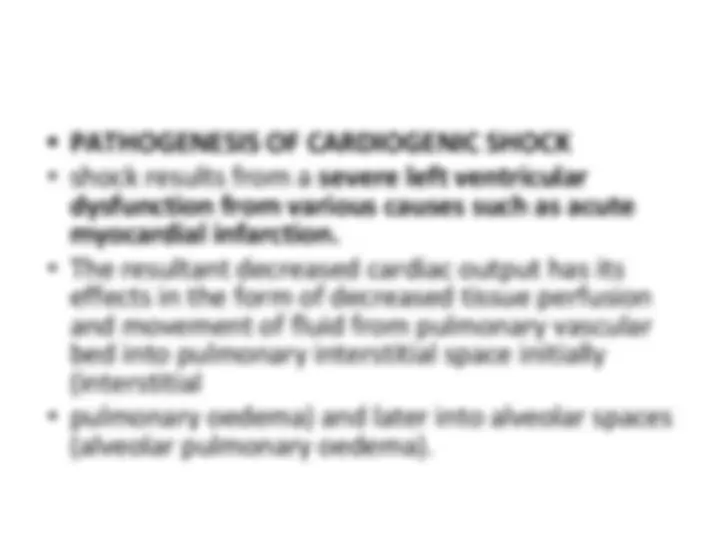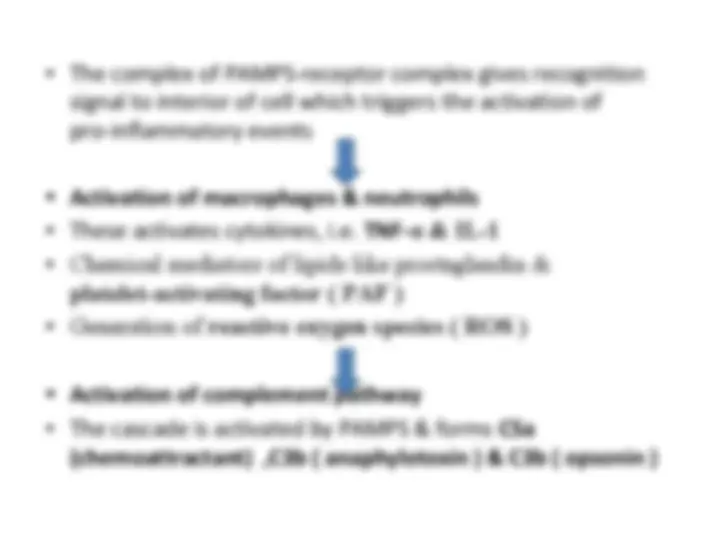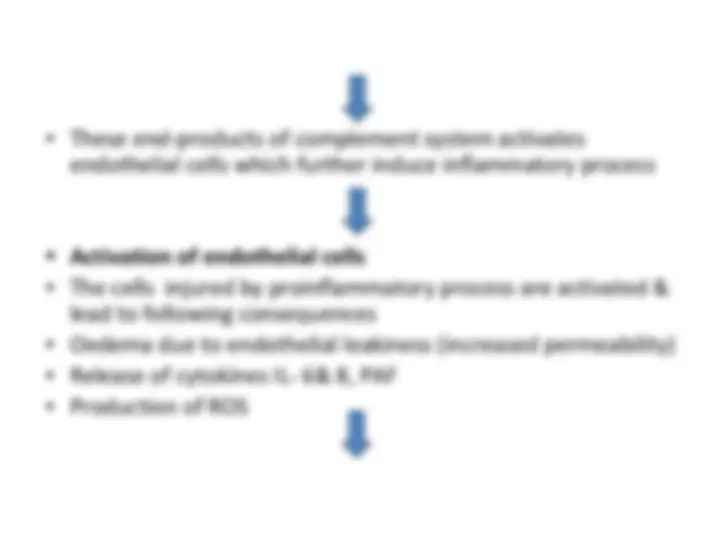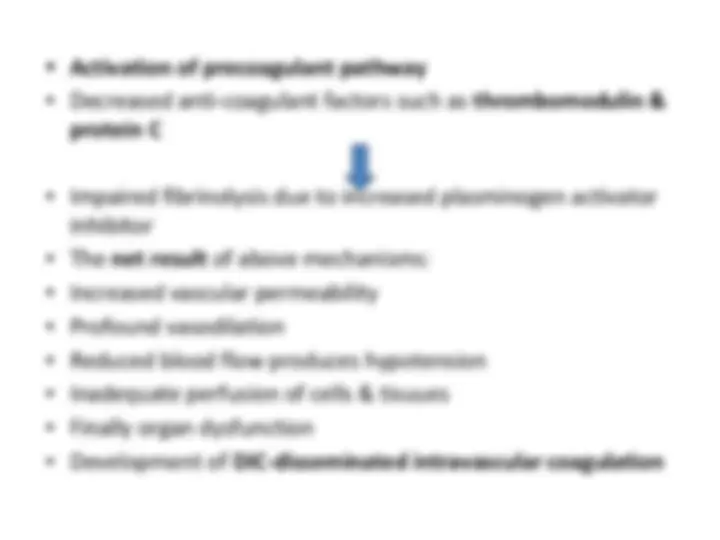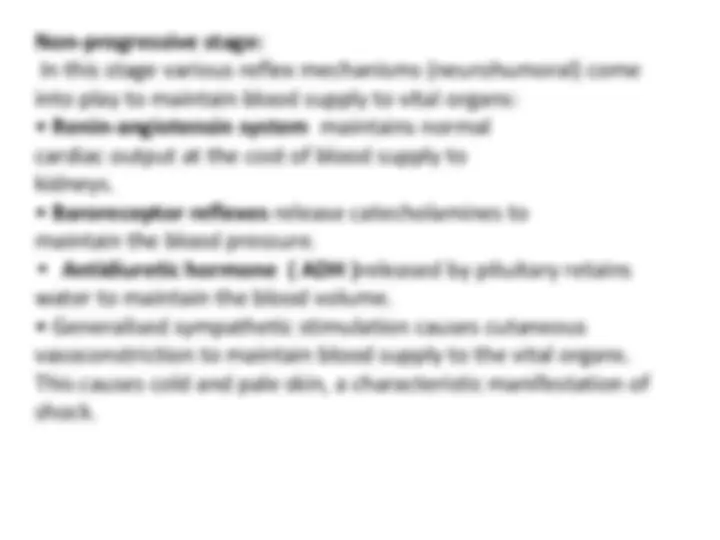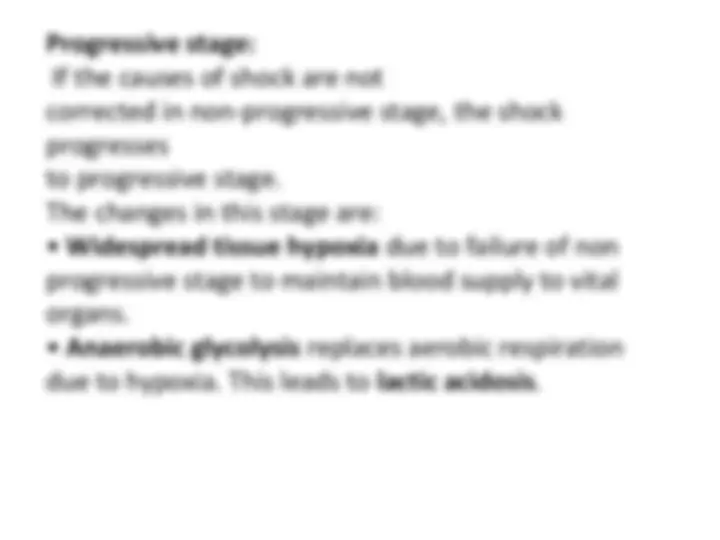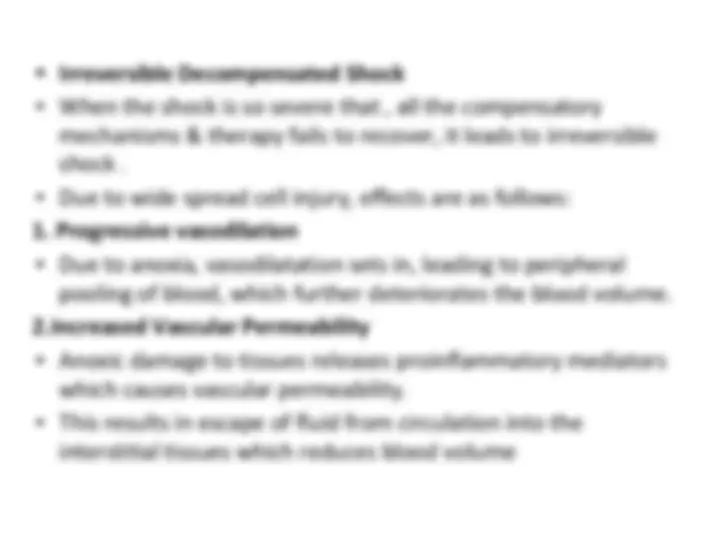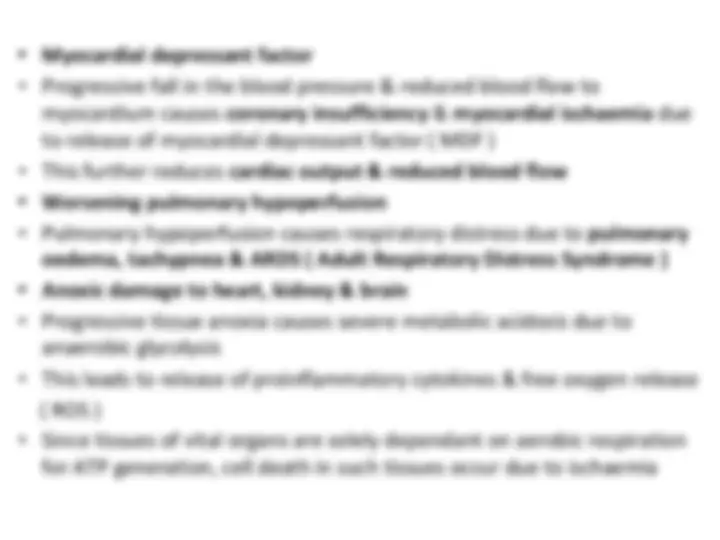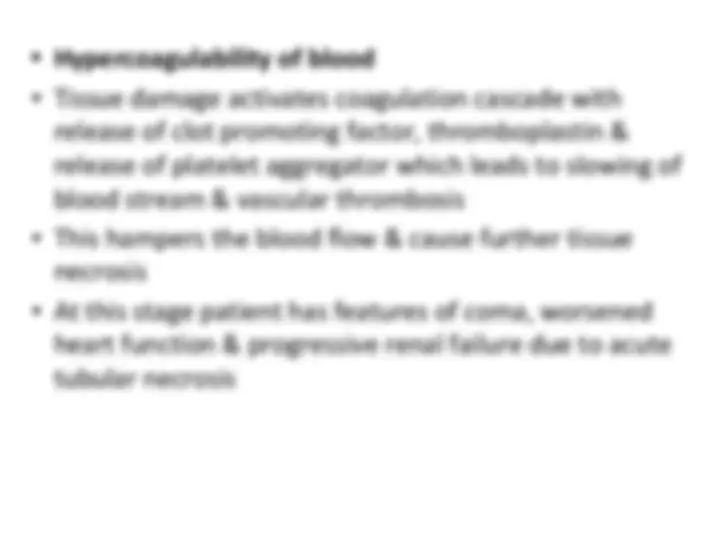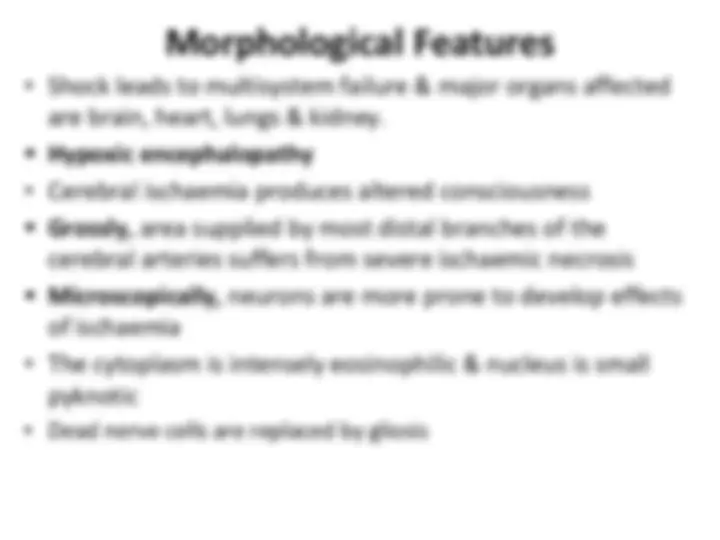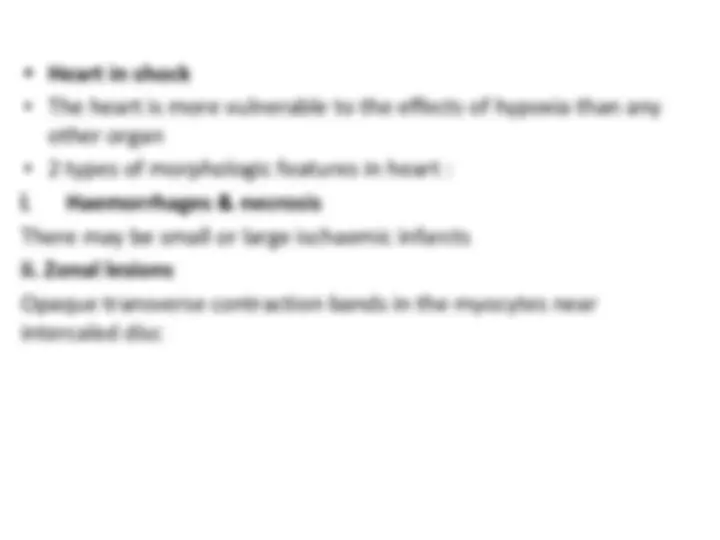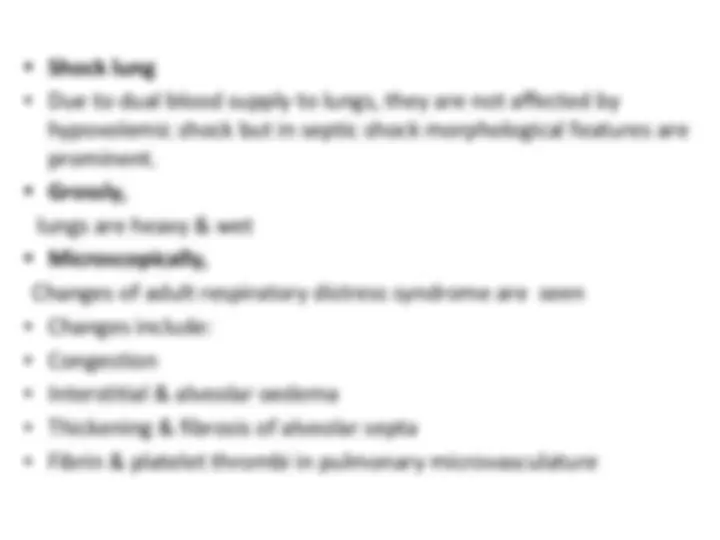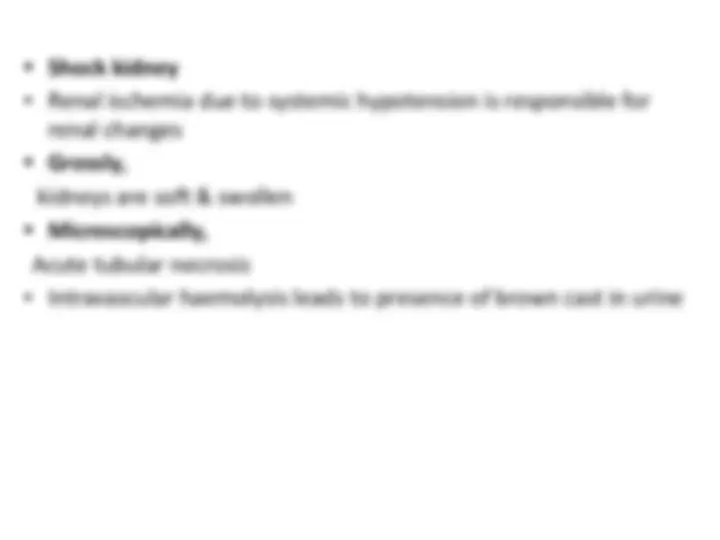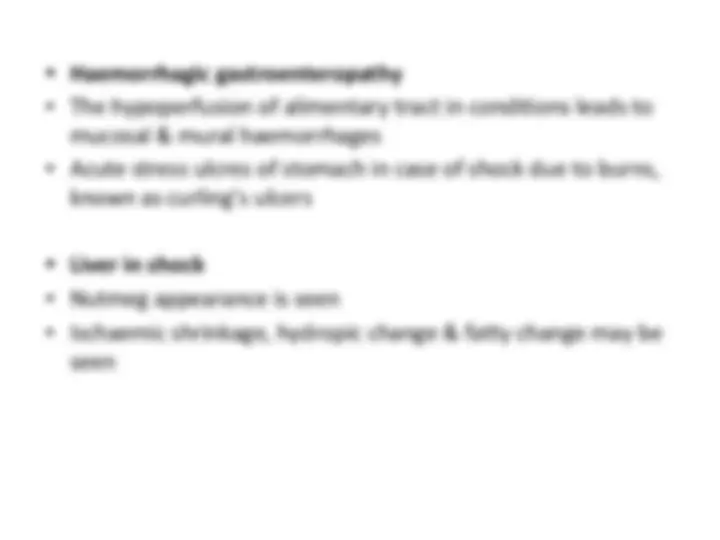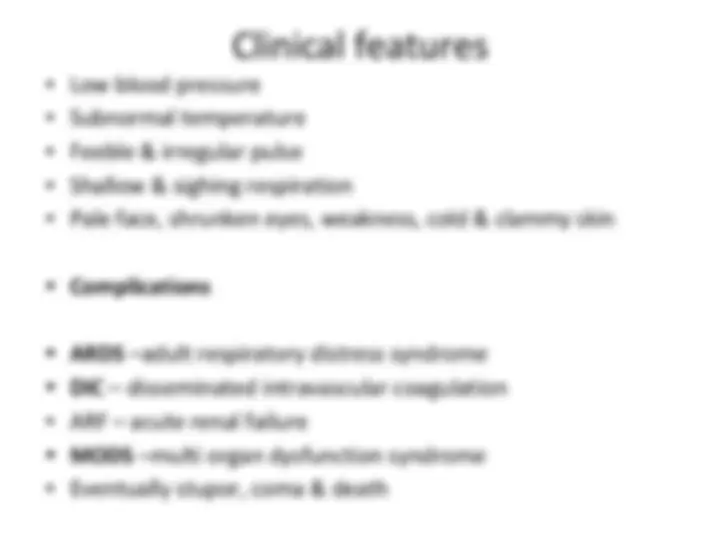Download PATHOLOGY AND MICROBIOLOGY and more Slides Pathology in PDF only on Docsity!
SHOCK
❑ A life threatening clinical syndrome of
cardiovascular collapse characterized by
o An acute reduction of effective circulating
blood volume ( hypotension )
o An inadequate perfusion of cells & tissues
o ( hypoperfusion )
If uncompensated, these mechanisms may lead
to impaired cellular metabolism, production &
release of damaging molecules & death.
- The term “initial shock” is used for transient &
benign vasovagal attack resulting from sudden reduction of venous return to heart e.g. after trauma, severe pain or emotional overreaction due to fear,sorrow, surprise.
Pathogenesis of shock
- In general,all forms of shock involve following 3 derangementPathogenesis
- In general, all forms of shock involve following 3 derangements: **- i) Reduced effective circulating blood volume.
- ii) Reduced supply of oxygen to the cells and tissues with
- resultant anoxia.
- iii) Inflammatory mediators and toxins released from shock-
- induced cellular injury.**
- These derangements initially set in compensatory mechanisms but eventually a vicious cycle of cell injury and severe cellular dysfunction lead to breakdown of organ function
- Reduced effective circulating blood volume This
may result by either of the following mechanisms:
- i) by actual loss of blood volume as occurs in hypovolaemic
shock; or
- ii) by decreased cardiac output without actual loss of blood
(normovolaemia) as occurs in cardiogenic shock and septic
shock.
- Release of inflammatory mediators
In response to cellular injury, innate immunity of the body
gets activated as a body defense mechanism and causes
release of inflammatory mediators but eventually these
agents themselves become the cause of cell injury.
- Endotoxins in bacterial wall in septic shock stimulate
massive release of pro-inflammatory mediators (cytokines)
but a similar process of release of these agents takes place
in late stages of shock from other causes.
- Several pro-inflammatory mediators are released from
monocytes-macrophages, other leucocytes and other body
cells, the most important being the tumour necrosis
factor-(TNF)-a and interleukin-1 cytokines.
- PATHOGENESIS OF HYPOVOLAEMIC SHOCK
- shock occurs from inadequate circulating blood volume due to various causes, most often from loss of red cell mass due to haemorrhage and, therefore, also called as haemorrhagic shock.
- The major effects in this are due to decreased cardiac output and low intracardiac pressure.
- The severity of clinical features depends upon degree of blood volume lost; accordingly
- PATHOGENESIS OF CARDIOGENIC SHOCK
- shock results from a severe left ventricular dysfunction from various causes such as acute myocardial infarction.
- The resultant decreased cardiac output has its effects in the form of decreased tissue perfusion and movement of fluid from pulmonary vascular bed into pulmonary interstitial space initially (interstitial
- pulmonary oedema) and later into alveolar spaces (alveolar pulmonary oedema).
PATHOGENESIS OF SEPTIC SHOCK
- It occurs due to endotoxins liberated by microbial infection. Thus, it is also called endotoxic shock.
- Most common cause of death in ICU - Causes
- Gramnegative bacterial infection (common, 62%)
- Eg. Pseudomonas, E-coli., Haemophilus)
- Gram positive bacterial infection ( 47%)
- Eg. Staphylococcus aureus, enterococci, streptococcus pneumonia
- Fungal infections (19%) - Predisposing condition
- • Chemotherapy (leads to immunosuppression)
- • HIV infection
- • Invasive procedures
- • Advanced age
- • Prevalence of multidrug resistant organism in hospitals
- Super antigens
- The complex of PAMPS-receptor complex gives recognition signal to interior of cell which triggers the activation of pro-inflammatory events - Activation of macrophages & neutrophils
- These activates cytokines, i.e. TNF-α & IL-
- Chemical mediators of lipids like prostaglandin & platelet-activating factor ( PAF )
- Generation of **reactive oxygen species ( ROS )
- Activation of complement pathway**
- The cascade is activated by PAMPS & forms C5a (chemoattractant) ,C3b ( anaphylotoxin ) & C3b ( opsonin )
- These end-products of complement system activates endothelial cells which further induce inflammatory process - Activation of endothelial cells
- The cells injured by proinflammatory process are activated & lead to following consequences
- Oedema due to endothelial leakiness (increased permeability)
- Release of cytokines IL- 6& 8, PAF
- Production of ROS
ANAPHYLACTIC SHOCK
Causes
- Drugs eg penicillin
- Pollen Many individuals are sensitive to the various causative agents (allergens). Even a tiny dose of the allergen in these individuals can induce mast cells to produce IgE antibody, which causes systemic vasodilatation and increased vascular permeability. leading to
- Sudden hypotension,
- decreased cardiac output and tissue hypoxia. This type of shock is immediate and often severe. To prevent this, hypersensitivity test (skin test) is mandatory.
Stages of shock.
When the shock is sudden and severe it quickly progresses to death and does not progress ia through the different stages. In rest of the situations three sequential stages can be made out:
- Non-progressive stage
- Progressive stage
- Irrevesible stage
Progressive stage:
If the causes of shock are not
corrected in non-progressive stage, the shock
progresses
to progressive stage.
The changes in this stage are:
- Widespread tissue hypoxia due to failure of non
progressive stage to maintain blood supply to vital
organs.
- Anaerobic glycolysis replaces aerobic respiration
due to hypoxia. This leads to lactic acidosis.
- Irreversible Decompensated Shock
- When the shock is so severe that , all the compensatory mechanisms & therapy fails to recover, it leads to irreversible shock.
- Due to wide spread cell injury, effects are as follows: 1. Progressive vasodilation
- Due to anoxia, vasodilatation sets in, leading to peripheral pooling of blood, which further deteriorates the blood volume.
2.Increased Vascular Permeability
- Anoxic damage to tissues releases proinflammatory mediators which causes vascular permeability.
- This results in escape of fluid from circulation into the interstitial tissues which reduces blood volume

